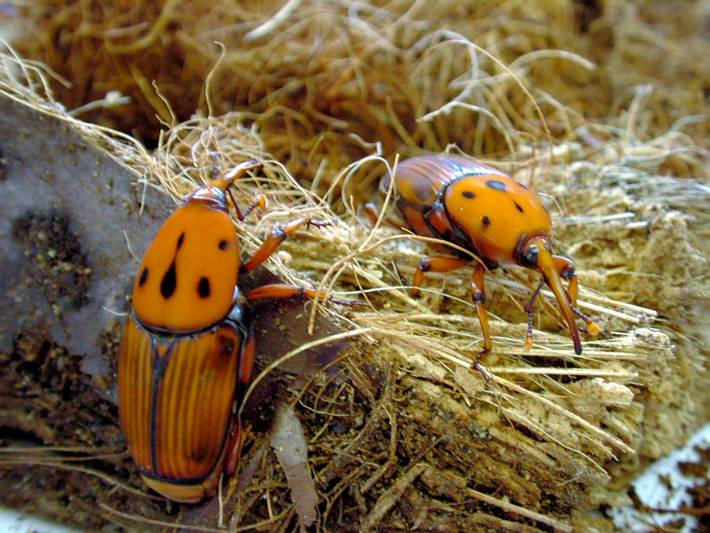Scientists at the International Center of Insect Physiology and Ecology (icipe) in partnership with the Kenya Agricultural and Livestock Organization have found new wasp species that can eliminate more than 70 per cent of fall armyworm pest.
The two wasp varieties Trichogramma and Telenomous when released into affected maize plantations lay their eggs on the fall armyworm eggs killing them before they reach the larvae stage when the pests destroy the crops.
The wasp therefore is a natural biological agent that may provide a sustainable solution to the fall armyworm pest.
Icipe in partnership with KALRO and University of Nairobi, are working on the mass production of the wasps before they are released to farmers.
Related content
Early planting controls Fall Armyworm
KALRO lists recommended insecticides to control Fall Armyworm
FAO launches mobile app to control fall armyworm

Fall Armyworm pest. Courtesy
FAW feeds on more than 80 crops, but prefers maize and can cut yields by up to 60 per cent. The female moth pest lays up to 1,000 eggs in her lifetime and can fly 100km per night.
The pest feeds on leaves and since it was detected in Kenya in 2016 farmers have been using synthetic pesticides to control it but the larvae has developed resistance hiding in the funnel to escape sprays only to emerge at night to feed on the crops.
In Kenya, over 800,000 hectares of crops mainly maize have been affected and destroyed by the pest in Kenya’s bread basket of Trans Nzoia, Uasin Gishu, Nandi, Busia, Kakamega, Kericho, Nandi, Bomet, Narok, West Pokot, Siaya, Kwale and counties in the central region.
As a result, maize production dropped from 37.8m bags in 2016 to 35.4m bags in 2017 according to the Economic Survey 2018.
In 2017, Uasin Gishu County for instance, hitherto considered Kenya’s bread basket, maize production dropped from 4.4m bags realized in 2016 to 3.7m bags, a 25 per cent drop.
Similarly, wheat yields plummeted to 430,000 bags from 466,000 bags in 2016.
Trans Nzoia County, a high maize production region on the other hand, harvested 4.7m bags of maize down from five million bags in 2016 due to Fall Armyworm infestation and maize smut disease.
In research funded by the UK’s Department for International Development (DFID), CABI now estimates the pest will cost just ten of the continent’s major maize producing economies in Africa a total of $2.2bn to $5.5bn a year in lost maize harvests - if the pest is not properly managed.
Write comment (0 Comments)




 Red Palm Weevils feeding. Photo courtesy.
Red Palm Weevils feeding. Photo courtesy.










